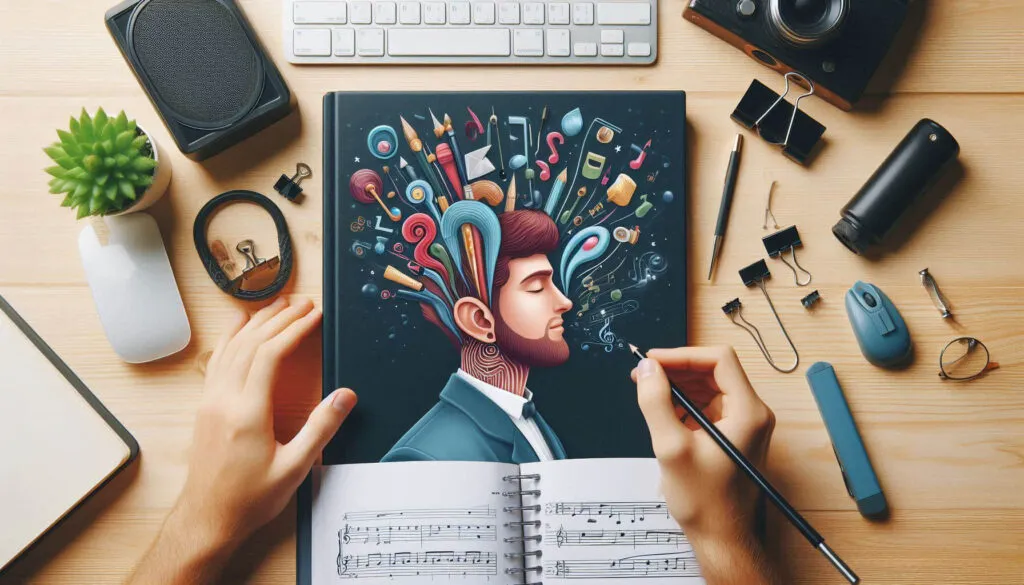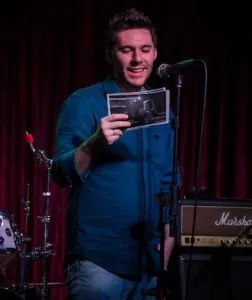Musical perception or ear training is perhaps the most important skill any musician should have. For the singer, this type of training is even more important.
Why?
Even before resorting to the specific technique of his instrument/voice or resorting to stylistic and interpretation issues, EVERY musician understands music through his ear. We musicians capture the sound vibrations that travel through the air through our auditory apparatus and our brain interprets all this information and decodes it. Afterwards, the same brain sends a command to our body that plays the music in our instrument or voice.
That’s how we learn to play or sing a song. This is how we evaluate the result of our performance (if notes or rhythms are right, for example). This is how when we are composing we evaluate whether a certain melody note makes sense in relation to that harmony.
Training the ear (studying musical perception) is exactly this step of decoding in the brain everything that our hearing aids have captured. Identify the direction the notes are going (if they go up, down or if they repeat); identify distances between notes; qualify musical intervals; transcribing melodies; understand and rationalize all the proportion of the rhythms in which the notes are being played; identify harmonic progressions; decompose the notes that form a chord… ALL of this and a few more things should make up your study.
In a musical instrument we can still resort to some kind of visual feedback to confirm if we are playing that song correctly, but we, singers, are completely dependent on our ear. Therefore, it is very important that any singer has a good level of ear training and studies music perception frequently.
Ear training expands our musical horizons as well. For example, a violinist with good ear training may not even know the specific technique of the piano, but when sitting in front of a keyboard, he can play simple melodies or harmonies using only his good level of perception.
And how can I train my ear?
Well, in the first place we have to have the notion that almost always a good ear is accompanied by knowledge of theory. There are exceptions, of course, but as the saying goes: the exception is the donkey’s rule.
Let’s say you’re trying to get a simple melody by ear. If you don’t know anything about music theory, you have 12 different possibilities for each note (the 12 chromatic notes – C, C#, D, D#, E, F, F#, G, G#, A, A# and B). But in the case of simple tonal music, if you already know the tone, you can greatly reduce the universe of notes that are being used in that melody.
So we strongly recommend that in addition to following the specific recommendations we’ll make below, that you study music theory on the side. There are a set of books we always recommend:
– Music theory – Vademecum of music theory. Written by Bohumil Med ( link to buy on Amazon ). This book has the theoretical information itself.
– Music theory – Workbook with feedback. Also written by Bohumil Med ( link to buy on Amazon ). This book is a great complement and allows you to exercise the knowledge gained in the other book.
And to train the ear itself?
We have recommended two methods that can be done interchangeably during the week’s study. One should not replace the other, especially in your first year of musical studies.
- Through the Ear Master software ( https://www.earmaster.com). This software is brilliant, we have already recommended it here on the blog and several students study through it. The first advantage is that it starts from very simple points that most people can execute and doesactically increases the difficulty of the exercises up to very complex levels, such as musical dictations, for example. The second advantage is that it has a scoring system for each exercise and each module and it is very easy to know if you need to redo the training or you can move on to the next step.
- Taking songs by ear. Mainly melodies, but also, later on, harmonies that accompany the melodies. This study can be a little more fun, but it does not replace (especially when you are starting your musical journey) training through Ear Master. This training can be a little more difficult to do at first and especially to know if you are doing it correctly. You can start with melodies that you already have good scores on (usually scores edited in songbooks), but you’ve never played or sung. That way you would have a template to check later.
Ten to fifteen minutes a day training in the Ear Master and 2 melodies a week can make a revolution in your musical performances as an instrumentalist and especially as a singer.





